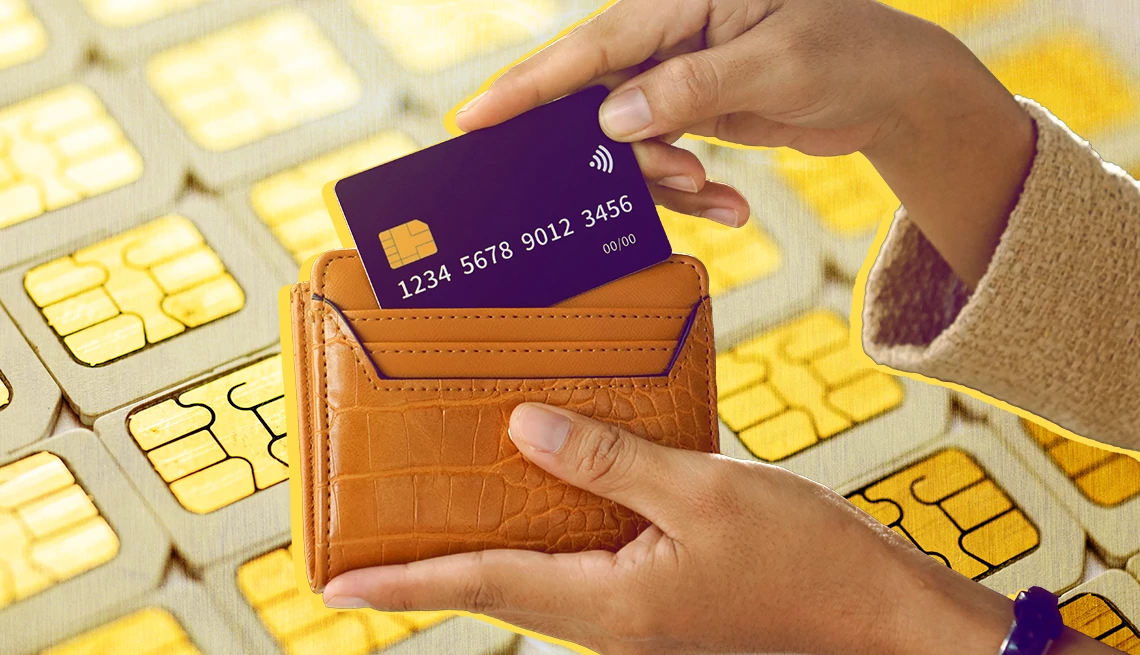AARP Hearing Center


It sounds like a sci-fi movie plot: A scammer uses a card reader to scan your credit card and steal your data from afar. For protection, a range of products — fanny packs, purses, card sleeves, wallets and more, some rather pricey — promise to shield your card from unauthorized access.
But these scams, theoretically perpetrated through RFID (Radio Frequency Identification) technology, are largely unheard of, experts say, and protective accessories aren’t necessary. “We do not believe this topic addresses a real risk,” says Identity Theft Resource Center (ITRC) Chief Operating Officer James E. Lee. “Chip-enabled payment cards and digital wallets are the most secure forms of payment except for cash.”
How is RFID used in credit cards?
Modern credit and debit cards are embedded with tiny components that use radio waves to communicate with a card reader. This enables you to “tap to pay” or make a contactless purchase, where you briefly tap or hover your card at a checkout terminal — no swiping or inserting the chip required.
“Simply put, it’s a short-range radio technology that transmits information between two objects,” says Claire Swedberg, the senior editor at RFID Journal, a leading industry publication.
Digital wallets such as Apple Pay and Google Pay also rely on this technology, Swedberg says, and because of the way your data are encrypted during transactions (more on that below), tap-to-pay and contactless payments are in fact more secure than swiping your card. They’re also more hygienic, she notes, because you minimize contact with surfaces while paying.
Figuring out if your card uses RFID is simple: Just look for a sideways Wi-Fi symbol (it’s the same symbol found on contactless card readers) printed on the front or back.




































































More From AARP
15 Worst Things to Carry in Your Wallet
With identity theft rampant, keep only the essentials in your pocket or purse
Unmasking Holiday Scams: Test Your Knowledge
Holiday scams rise as AARP survey reveals vulnerabilityWhat to Do After You’ve Experienced a Scam
Take these key steps to protect your bank accounts and personal information, and find the support you need